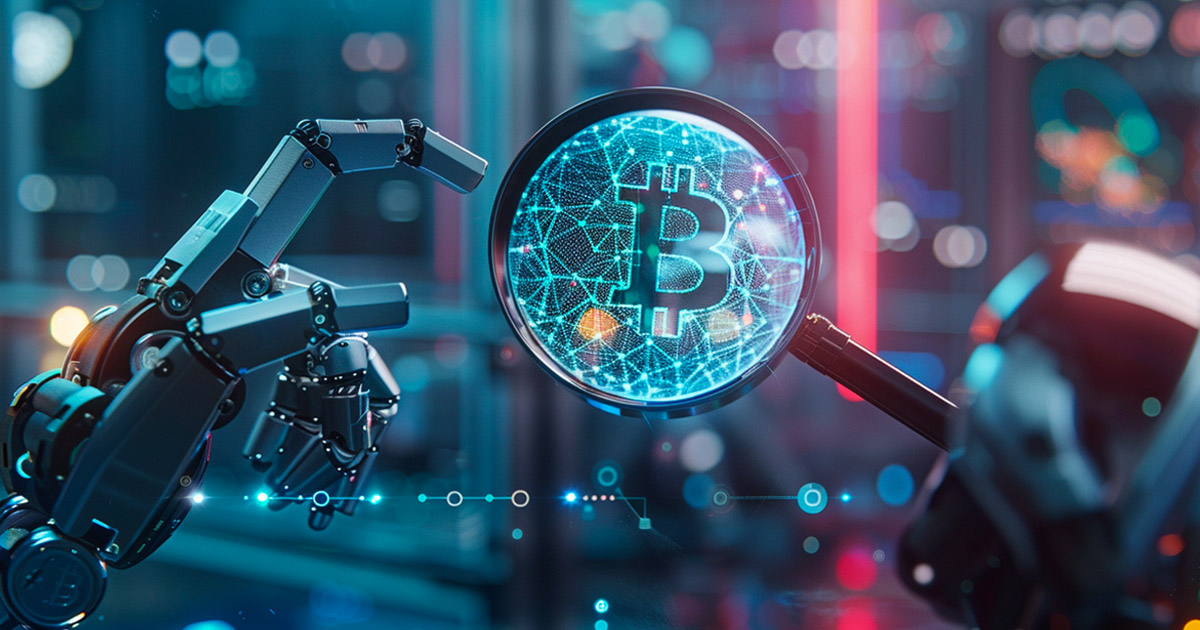The Impact of Artificial Intelligence on Anti-Money Laundering in Cryptocurrency Transactions
Artificial Intelligence (AI) tools have the potential to transform the landscape of anti-money laundering efforts within cryptocurrency transactions. These advanced tools possess the capability to analyze a significantly larger volume of transactions at a much faster rate compared to human capabilities. This newfound efficiency aids banks and law enforcement agencies in keeping pace with the sheer magnitude of daily transactions, which number in the millions.
One of the prevalent tactics employed in money laundering involves the rapid movement of funds between various accounts. Rapid identification of suspicious transactions can provide law enforcement with a crucial advantage. However, it is essential to acknowledge that while AI serves as a valuable tool in combating money laundering, it is not a standalone solution. Criminal entities, rogue states, and terrorist organizations also possess access to AI tools, enabling them to perpetrate fraudulent activities and evade existing money laundering mechanisms.
The Role of AI in Anti-Money Laundering
AI tools offer law enforcement professionals the ability to detect suspicious patterns within financial transactions at an accelerated pace compared to manual methods. Research conducted by Mathieu Weill highlights that AI can contribute to a substantial reduction in false positives encountered during anti-money laundering processes. This technological advancement also facilitates the digitization of Know Your Customer (KYC) procedures and the identification of ultimate beneficial owners. Moreover, AI aids in ensuring compliance with national regulations and identifying validator nodes that may be sanctioned or controlled by illicit entities.
“Blockchain technology is being recognized for its potential to significantly improve AML processes,” Weill states. “Its inherent properties, such as immutability and transparency, make it an ideal tool for maintaining secure and tamper-proof records of financial transactions. Blockchain can facilitate real-time sharing of updated KYC documents and transaction histories . . . making it more difficult for launderers to conceal their activities.”
The challenges faced by law enforcement authorities are considerable. In New York State alone, regulators grapple with a backlog of tens of thousands of transactions awaiting monitoring, as pointed out by Arthur Mueller from WorkFusion.
The Proliferation of AI Tools among Cybercriminals
AI tools are not exclusively wielded by law enforcement and financial institutions; cybercriminals have also embraced this technology, creating further complexities for both public and private sectors. These malevolent actors leverage AI capabilities to expedite theft, fraud, and money laundering activities on a larger scale.
According to Infosecurity Magazine, “Generative AI models can be used to make money laundering processes more efficient for financial criminals… by helping to create fake companies, invoices, records, and financial statements, find loopholes in legislation, and even generate offshore accounts to conceal funds.”
Furthermore, cybercriminals employ sophisticated AI models, such as Chat GPT, to enhance the efficacy of existing fraudulent schemes. Tools like Fraud GPT and Worm GPT, available on the Dark Web, empower bad actors to engage in malicious activities ranging from creating undetectable malware to developing phishing pages.
Notably, fraudsters exploit AI to deceive victims through investment scams. The Department of Justice exposed a scheme where individuals were enticed to invest in fictitious trading programs with promised high-yield profits generated by an artificial intelligence automated trading bot. This misleading practice is commonly referred to as “AI washing.”
The Imperative for Proactive Measures
Given the increasing adoption of AI by criminal entities, it is imperative for law enforcement agencies, financial institutions, and businesses operating in the cryptocurrency sphere to incorporate these advanced tools into their operations. By leveraging AI technology, these entities can proactively combat fraudulent activities and enhance regulatory compliance.
The fusion of AI with blockchain technology represents a transformative approach to fortifying the ecosystem against fraudulent practices. Tim Vasko, the founder of BlockCerts, advocates for the integration of AI’s sophisticated validation processes with blockchain’s immutable proof protocols to establish a secure transaction environment.
“Our strategy transcends theoretical postulations; it is an operational platform that reinforces both conventional business and finance realms, as well as the cryptocurrency sector, with the values of integrity and trust,” Vasko affirms.
AI stands as a formidable tool that can drive positive societal change. Embracing the “technological imperative,” professionals must continually evolve to harness the benefits of AI while preemptively addressing associated risks. By staying ahead of malicious actors and deploying AI responsibly, organizations can uphold ethical standards and cultivate trust within the digital ecosystem.
Image/Photo credit: source url





